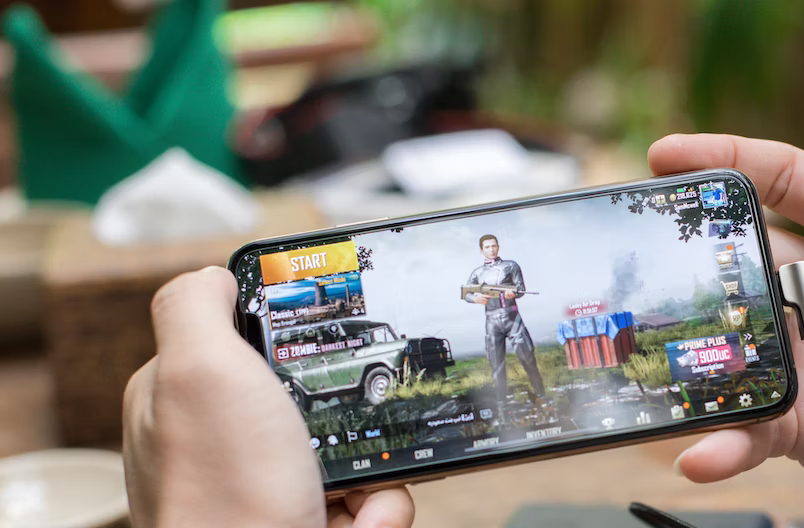Creating a mobile game can be an exciting and rewarding process, whether you’re an experienced developer or just starting. With the right tools and a bit of dedication, you can bring your game idea to life and potentially reach millions of players worldwide. In this article, we’ll provide a simple guide on how to make a mobile game, covering everything from initial concept to launching on app stores.

Come Up with a Game Idea
The first step in creating a mobile game is to come up with a unique and engaging game idea. Consider the following when brainstorming:
- Target audience: Who will play your game? Consider their age, interests, and gaming preferences.
- Genre: Choose a game genre that suits your idea, such as puzzle, action, or strategy.
- Monetisation: Decide how you’ll make money from your game, through in-app purchases, ads, or a one-time purchase.
Choose a Game Engine
A game engine is a software framework that simplifies game development by providing tools and features to create and manage game assets, physics, and logic. Popular game engines for mobile development include:
- Unity: A versatile and widely-used game engine that supports 2D and 3D game development. Unity offers a large asset store and extensive tutorials, making it beginner-friendly.
- Unreal Engine: A powerful game engine known for its high-quality graphics capabilities. Unreal Engine uses a visual scripting system called Blueprints, which can be helpful for those with limited programming experience.
- Godot: A free and open-source game engine that supports both 2D and 3D game development. Godot has a smaller community than Unity or Unreal, but it’s beginner-friendly and has a growing library of tutorials and resources.
Learn the Basics of Game Development
To create a mobile game, you’ll need to learn the basics of game development, including programming, design, and asset creation. You can find numerous resources online, such as:
- Online tutorials and courses: Websites like Udemy, Coursera, and YouTube offer a wealth of game development tutorials and courses for various skill levels.
- Books and eBooks: There are numerous books and eBooks available on game development, covering everything from programming to game design.
- Community forums and discussion groups: Join game development forums and communities to ask questions, share experiences, and learn from fellow developers.
Create Game Assets
Game assets include characters, objects, environments, and other visual elements in your game. You can create game assets using digital art tools like Photoshop, Illustrator, or Blender, or you can purchase or download free assets from online marketplaces like the Unity Asset Store or Unreal Marketplace.
Develop Game Logic and Mechanics
With your game assets created, you’ll need to develop the game’s logic and mechanics. This involves programming the rules and interactions within your game, such as character movement, game physics, and win/lose conditions. Depending on your chosen game engine, you may need to learn programming languages like C#, C++, or GDScript.
Test and Optimize Your Game
Before launching your game, it’s essential to test and optimize it for various devices and screen resolutions. This ensures that your game runs smoothly and provides a good user experience. Test your game on multiple devices, fix any bugs or performance issues, and make any necessary adjustments to the game’s design and mechanics.
Publish Your Game
Once your game is complete and thoroughly tested, it’s time to publish it on app stores like Google Play and the Apple App Store. Each platform has specific requirements and guidelines, so be sure to review them carefully before submitting your game for review. Once approved, your game will be available for download,and you can start marketing it to potential players.
Marketing Your Game
To ensure your mobile game reaches its target audience, you’ll need to invest time and effort into marketing. Here are some marketing strategies to consider:
- Social media: Create engaging content and share updates about your game on platforms like Facebook, Twitter, and Instagram. Use hashtags and engage with relevant gaming communities to increase visibility.
- Press releases and reviews: Reach out to gaming websites, bloggers, and influencers to review your game or feature it in articles. Positive reviews can generate buzz and attract new players.
- App Store Optimization (ASO): Optimize your game’s listing on app stores by using relevant keywords, creating an eye-catching icon, and crafting a compelling description. This can improve your game’s visibility in search results and increase downloads.
- Advertisements: Consider running ads on platforms like Google Ads, Facebook Ads, or in-app ad networks to promote your game and reach a larger audience.
Regular Updates and Support
Once your game is live, it’s essential to provide regular updates and support to keep players engaged and attract new ones. Listen to player feedback, fix any bugs or issues, and release new content or features to keep your game fresh and exciting. By maintaining a strong relationship with your player base, you can increase your game’s longevity and success.
Conclusion
Creating a mobile game can be a rewarding and fulfilling experience, allowing you to bring your creative vision to life and share it with millions of players worldwide. By following this simple guide on how to make a mobile game, you can develop your skills, create an engaging game, and potentially achieve success in the booming mobile gaming market. Remember to stay persistent, be open to learning, and enjoy the process of creating your very own mobile game.